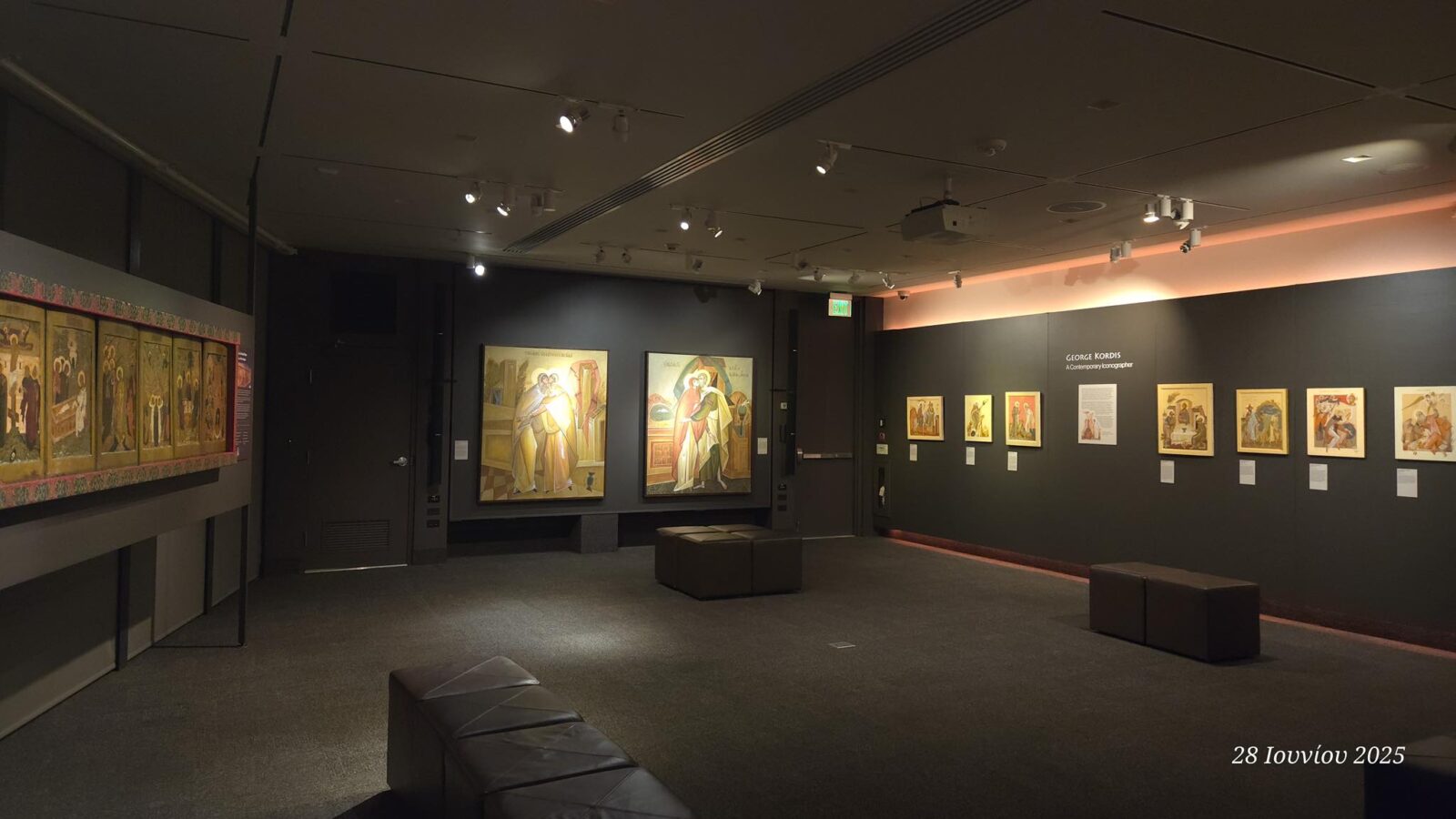Η ΤΕΧΝΗ ΤΗΣ ΑΡΜΟΓΗΣ
Εξηγώ συχνά στους μαθητές μου της ζωγραφικής πως στην βυζαντινή εικαστική παράδοση η χρωματική σύνθεση ακολουθεί την αντιστικτική λογική που συναντάται και στην φύση-κτίση με την αντιπαράθεση ψυχρών και θερμών και την παράλληλη αντίθεση ανοικτών ( φωτεινών) και κλειστών ( σκούρων) χρωμάτων.
Έτσι χτίζεται το χρώμα τους εξηγώ.
Κι άμα αρχίζουν- που πάντα αρχίζουν- οι ερωτήσεις εξηγώ πως δεν υπάρχουν εξ ορισμού θερμά και ψυχρά χρώματα ούτε σκούρα και φωτεινά. Όλα είναι σχετικά. Έτσι ένα μαβί ή μιά ώχρα ή ένα γλαυκό μπορεί να είναι ταυτόχρονα θερμό ή ψυχρό αναλόγως με την συνάφειά του, ανάλογα με τις σχέσεις στις οποίες εμπλέκεται και συμμετέχει. Το ίδιο ισχύει με όλα τα χρώματα.
Κι αυτό δεν είναι περίεργο αλλά φυσιολογικό και ισχύει γιἄ όλη τη ζωή και γιά όλα της ζωής.
Τίποτα δεν εἰναι κάτι. Όλα γίνονται διαρκώς ως προς κάτι άλλο, μέσα στην συνάφειά τους, στις σχέσεις του. Όλα ένα διαρκές γίγνεσθαι είναι.
Και η αναγνὠριση αυτής της ρευστής, κβαντικής “πραγματικότητας” γιά κάποιους, “ναύτες των επτά θαλασσών”, είναι λυτρωτική. Αντιθέτως είναι βασανιστική γιά άλλους και κυρίως για όσους επιζητούν την βεβαιότητα των συνταγών και την ασφάλεια τους.
Φοβούνται οι άνθρωποι τόση ελευθερία. Τους τρομάζει ο κόπος που οφείλουν να κάνουν διαρκώς γιά να διακρίνουν και ανά πάσα στιγμή να επιλέγουν τί ταιριάζει και τί αρμόζει γιά να χτιστεί μιά ενότητα πραγμάτων που θα λειτουργεί κάτω από ορισμένες συνθήκες. Κι ακόμα περισσότερο, θαρρώ , το πιο δύσκολο είναι να δεχτεί κανείς πως όλος ο κόπος που κάνει ίσως και να μην οδηγεί πουθενά και πως πρέπει να ξαναπάρει τα πράγματα από την αρχή ξανά και ξανά. Να ακριβώς όπως στην κανονική ζωή όπου κάθε ημέρα , “εν μετανοίᾳ”, πρέπει κανείς να ξεκινά τη ζωή του απο την αρχή αφού συνηθως μέχρι τώρα σχεδόν όλα λάθος τα κάνει…
Η τέχνη της αρμογής-σύνθεσης των χρωμάτων στην ελληνική-βυζαντινή ζωγραφική που δεν έχει την ασφαλή αναφορά στην φαινομενική πραγματικότητα είναι τέχνη ζωής.
Βαδίζει κανείς χωρίς ορισμούς και ταμπέλες, χωρίς κατάταξη και ταξινόμηση. Απλώς θεωρεί και αγγίζει τα πάντα, ψαύει τις επιφάνειες, οσμίζεται το άρωμά τους, γροικά τα σωθικά τους και τα θυληκώνει τρυφερά και στέρεα, τα φέρνει σε σχέση γιά να αντέξουν τις θύελλες της μοναξιάς και το καταιγές των αυτονομημένων, νεκρών πραγμάτων.
THE ART OF COMPETENCE
I often explain to my painting students that in the Byzantine artistic tradition, the color composition follows the antithetic logic found in nature design, juxtaposing cold and warm colors and the parallel contrast of open (bright) and closed (dark) colors.
This is how their color is built, I explain.
And when the questions start – which they always do – I explain that there are, by definition, no warm and cool colors nor dark and light. Everything is relative. So a mavi or an ochre or a glaucous can be warm or cool at the same time depending on its context, depending on the relationships in which it is involved and participates. The same applies to all colors.
And this is not strange but normal and applies to all of life and everything in life.
Nothing is something. Everything is constantly becoming something else in its coherence and relationships. Everything is a constant becoming.
And the recognition of this fluid, quantum “reality” for some, “sailors of the seven seas,” is redemptive. On the contrary, it is excruciating for others, especially those seeking the certainty of prescriptions and their security.
People are afraid of so much freedom. They are frightened of the effort they must make to constantly discern and, at any moment, choose what fits and what is appropriate to build a unity of things that will work under certain conditions. And even more, I think the most challenging thing is to accept that all the effort one makes may not lead anywhere and that one has to start over and over again. Like in everyday life, where every day, “in repentance,” one has to start one’s life all over again since usually, by now, one has done almost everything wrong…
The art of the harmony-composition of colors in Greek-Byzantine painting that has no safe reference to the apparent reality is the art of life.
One walks without definitions and labels, classification and classification. One considers and touches everything, searches the surfaces, smells their fragrance, punches their insides, and thimbles them tenderly and solidly, bringing them into a relationship to withstand the storms of loneliness and the storms of self-contained, dead things.




